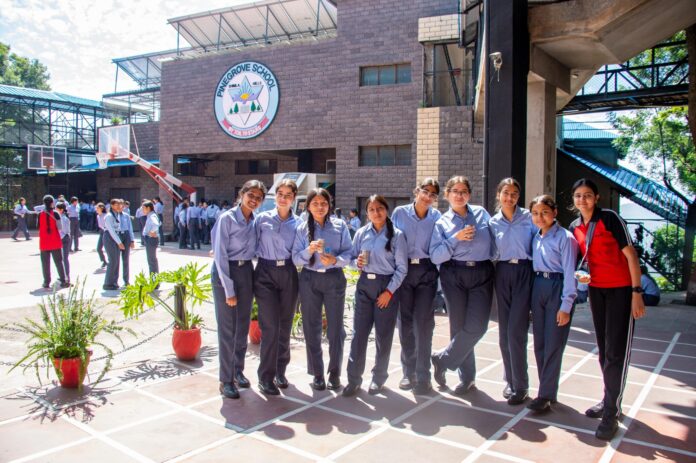Just two years ago, Sallie B. Howard School of Arts & Science (SBHS), a charter school in Wilson, launched a pioneering study abroad program at India’s Pinegrove School. The semester-long experience, occurring amid the verdant Himalayan foothills of Himachal Pradesh in North India, has proved transformative for participating students.

High school juniors Blanca Orozco-Perez and Angela Sangabriel lived and studied at Pinegrove last fall, two of four SBHS students selected to go. Both returned to the U.S. having experienced seismic shifts in their self-perceptions, worldview, and habits.
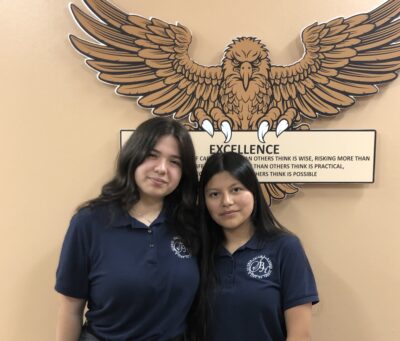
Prior to studying abroad, Orozco-Perez was reticent and unsure of herself. “I wouldn’t talk to a lot of people,” she said. “I was very timid. I was very shy. I couldn’t express myself right.”
But study abroad in the East, with its immense cultural difference, stretched and emboldened her. Along the way, something remarkable happened: Her view of herself and her engagement with the world changed.
“I learned overall that you can’t hide yourself in a box and expect everything to come to you,” said Orozco-Perez. As she navigated new relationships, customs, and food, she became more expansive and expressive. Upon her return to Wilson, her mother remarked, “You talk a lot more!”
For Sangabriel, travel itself was a novelty. “I had never been outside of the country until then, so it was my first time on a plane,” she said.
A folk musician, Sangabriel was transfixed by the deeply evocative quality of Indian music. “I had my eyes on the beautiful way that Indian classical music expresses itself,” she said. “That was one of my … driving factors the second I heard about it.”
In her study abroad application, Sangabriel promised to learn at least two songs in Hindi. She did that and more, performing and singing solo before a crowd of over 1,000 people at Pinegrove. Musical immersion abroad helped her bridge language and culture.
“Music is really a universal language,” she said. “You don’t have to understand what someone is saying to be able to understand their emotions.”
A commitment to developing ‘global citizens’
One of North Carolina’s first public charter schools, SBHS was founded in 1997 by Dr. JoAnne Woodard, with the mission of developing “global citizens” through performing arts, a culturally diverse faculty, and worldwide travel. So, while study abroad is relatively new at SBHS, travel abroad is not — and was part of the school’s original charter application.
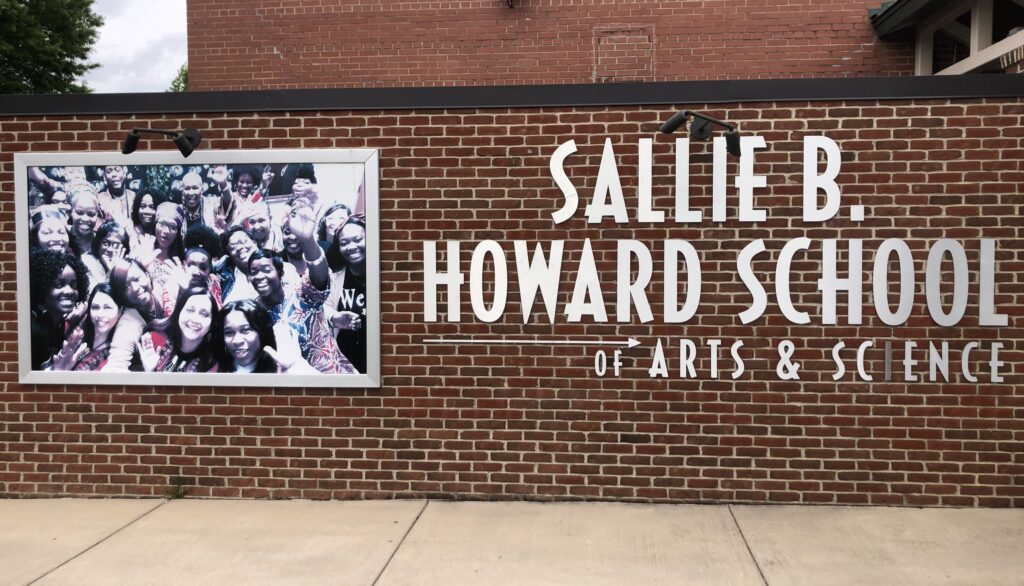
A Title I school that serves a high percentage of economically disadvantaged students, most of whom are Black or Hispanic, SBHS is fundamentally aspirational in its aims. The school is “dedicated to ensuring that every child — privileged or underprivileged — gets the kind of education that will allow them to become more than they ever thought they would be,” according to the SBHS website.
External accolades have validated this approach. SBHS was awarded recognition as a 2021 National Blue Ribbon School for success in closing achievement gaps and as a 2024 National ESEA Distinguished School for gains with students with disabilities.
The school is named for the late educator and playwright Sallie Baldwin Howard, a Wilson native and avid traveler. Together with Woodard, Howard established a summer camp for at-risk children in 1989 that led to the founding of SBHS.
“Sallie B. Howard had already traveled to more than 40 countries when I met her,” said Woodard, who serves as the executive director at SBHS. “We adopted and embraced a lot of, if not everything, that she brought to the vision and the mission of the school.”
“We are trying to expose students to more than the United States and definitely more than eastern North Carolina,” Woodard added of the school’s emphasis on global travel. “Several of our students haven’t even been as far as Charlotte or outside of the state … That’s a bit of the demographic that we serve.”
Exposure to the world has been comprehensive. Across 20-plus years of travel, students have visited every continent except Antarctica, said Pratibha Rani, the director of instruction at SBHS.
They’ve traveled to China, Mexico, Cuba, Australia, South Africa, India, France, and Dubai, she said. Those trips typically lasted 2-3 weeks.
Now, students study abroad for 8-10 weeks each fall, living alongside Indian students at Pinegrove, a private boarding school.
Program features and eligibility
High school expansion in 2020 helped prompt the shift in 2023 from travel abroad to study abroad, said Sandeep Aggarwal, the assistant director at SBHS.
Aggarwal, who worked at Pinegrove in the late 1990s, was instrumental in establishing a sister school relationship with Pinegrove. The study abroad program thus functions as an exchange: While SBHS students are in India, students from Pinegrove travel to Wilson, staying with local host families and attending SBHS. This fall, 15 Pinegrove students visited for two weeks, and four stayed on for the semester.
SBHS leaders emphasized that the school’s study abroad application, which is open to rising high school juniors and seniors, is quite rigorous. Aspiring travelers write essays about why they want to study in India, secure teacher recommendations, and participate in interviews. The top four applicants are selected to go.
The program is free for participating students, who pay only for passports and spending money. Donors sometimes contribute to the program, school leaders said, but study abroad is a regular part of the school budget approved by the board. Generally, the cost to study abroad ranges from $5,000-$7,000 per student. Pinegrove does not charge SBHS students any tuition.
Aggarwal and Rani accompany students to India, staying for two weeks, they said. At semester’s end, Aggarwal returns to India, traveling back to Wilson with students. Throughout the semester, Rani said she works closely with Pinegrove teachers on alignment, so students don’t lose instruction or curriculum.
Cultural immersion cultivates attitude shifts
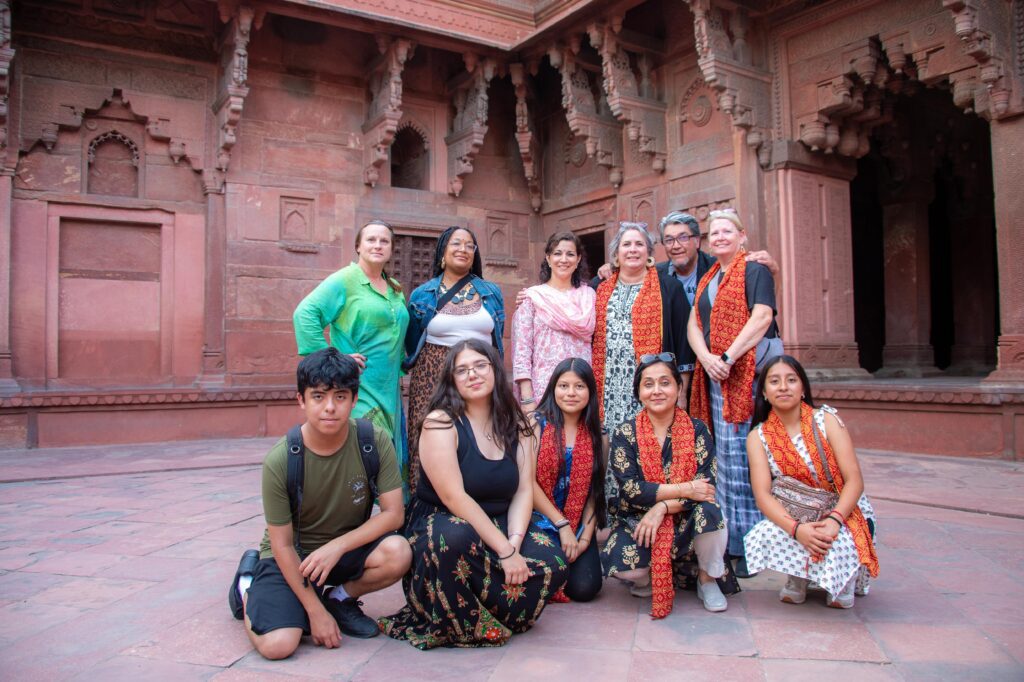
For Sangabriel and Orozco-Perez, immersion in Indian culture prompted a reexamination of attitudes and worldview. They were struck, they said, by the pervasive happiness they witnessed amid poverty.
“We did see the amazing and the unfortunate while we were there,” Sangabriel said. “It just made me a lot more grateful for what I had.”
“In the United States, there is a very big culture (of) ‘I need more’ … never having enough,” she added. “In India, I saw people, who didn’t really even have the things that they needed, being happy.”
Orozco-Perez observed joyful play between parents and children, despite obvious material need. It changed how she viewed her own life. “You have to expand your perspective and see how other people look at things … You have to look at things and be grateful (for) what you actually have,” she said.
Both students also internalized a greater respect for authority due to their immersion in Indian culture. “Whenever a teacher or … higher authority walked in, you would have to stand up, and you would have to wait until they allowed us to sit down,” said Orozco-Perez. “So, when I came back, that is all I did.”
Sangabriel was particularly impressed by Indian students’ cooperation with authority figures and its propulsive effect on classroom productivity. “Obedience is given such a negative connotation in the United States, and especially with a lot of youth nowadays … That wasn’t a thing over there,” she said.
“It was just a very maturing experience for me,” she added. “I came back much more cultured and a lot more respectful.”
“What they are reflecting on is not just American culture,” Aggarwal observed. “They will blend the best of the East and best of the West and become better.”
“Both cultures have some amazing things to offer, and both are missing some things,” he said. “These kids are fortunate to be living in the West but experiencing the East.”
Smartphone restriction spurs new habits
Students also formed new habits while abroad, due in part to Pinegrove’s restrictive cell phone policy. At the boarding school, students can access their phones for just 30 minutes twice a week, on Tuesdays and Saturdays. That policy helped shape salutary habits for both Orozco-Perez and Sangabriel, impacting academics, friendships, and health.
Before studying in India, Orozco-Perez struggled with distractibility. “I would be doing my homework, and then out of nowhere, I would just end up on my phone,” she said.
That habit impeded realization of her goals. Since second grade, Orozco-Perez had tried unsuccessfully to make the A honor roll, she said. While in India, she earned a spot on the A honor roll during both academic quarters.
The achievement prompted a realization: The phone, not a lack of capacity, was the problem.
“I actually realized how capable I was of doing something. And when I came back, I had the mindset of getting my work done,” said Orozco-Perez of her academic success. “It made me feel great!”
For Sangabriel, time away from the phone heightened sensory awareness of her surroundings. In India, memories from phone-free outings — with sightings of cows and monkeys — seemed more vivid, she said.
Smartphone restriction prompted ongoing behavioral change, too. Previously, Sangabriel said she engaged in mindless, “bored eating” during free time. Now, she brings a more disciplined focus to food, eating at regular mealtimes and intervals, she said.
Sangabriel is also intentional about prioritizing personal engagement during outings and in relationships.
“If I am out, my phone isn’t,” she said. “If I am with friends, my phone is in my bag.”
Study abroad fosters new learning, culinary experimentation
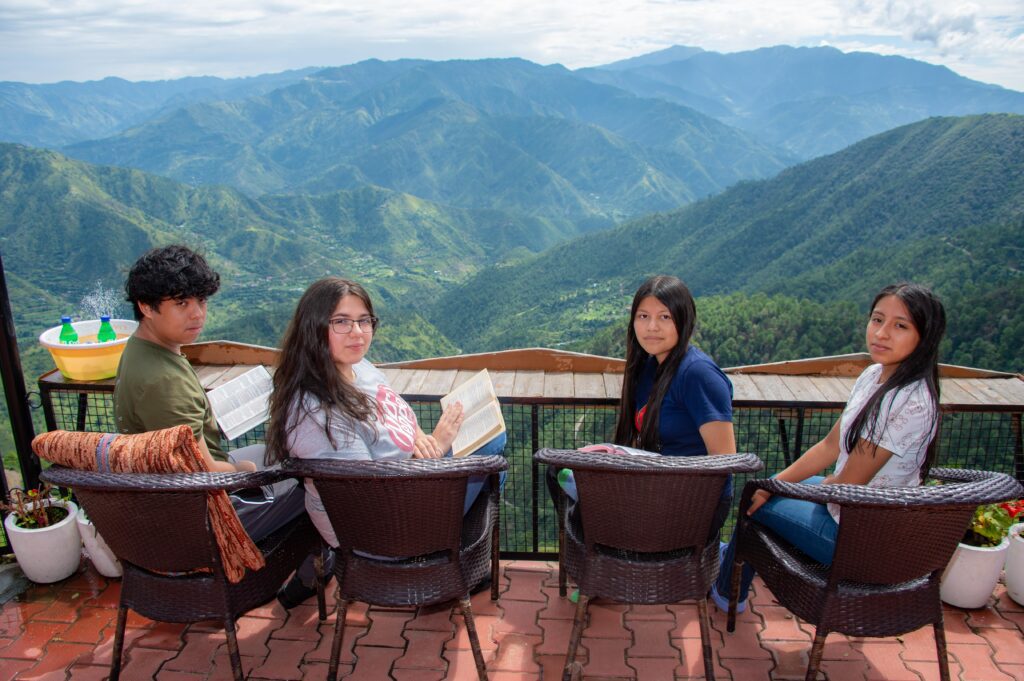
School leaders said they also saw some notable improvements in student learning. Students are exposed to different ways of doing school in India, Rani said. That can help them acquire skills and engage with content in new ways.
One of this year’s study abroad students, Jehova Polanco, hated writing and struggled with it, she noted. In India, however, his dormitory director required him to sit and practice writing after school hours. Something shifted internally.
“He fell in love with writing,” said Rani. “From before and after, [it] was a miraculous change in the way that the child started writing.”
While in India, students also focused intensively on the performing arts, culminating in Pinegrove’s Annual Day celebration, Rani said. While Sangabriel studied Indian classical music, Orozco-Perez focused on Kathak, a form of Indian classical dance.
All of the walking she did on Pinegrove’s campus made her stronger, Orozco-Perez said, leading to improvements in her flips and turns. When she returned to Wilson, she was able to complete an aerial for the first time in six years.
Study abroad also prompted adventurous culinary experimentation. Students were eager to try Indian specialties, leaders said, preferring that to American fast food favorites.
“Even when we were out, when they had access to KFC, McDonald’s, they always [said], ‘Let’s go eat Indian,’” Rani said.
Orozco-Perez developed a particular fondness for seviyaan, a sweet vermicelli milk pudding that is similar to rice pudding.
She and Sangabriel said they and the other SBHS students also enjoyed biryani, a rice dish; egg curry; momos, a kind of steamed dumpling; and paneer, a fresh Indian cheese.
A ‘lived experience’ yields greater impact
School leaders marveled at the scope of students’ recollections, more than five months after the trip.
“You are touched so much that you cannot stop talking about it,” Rani told Sangabriel and Orozco-Perez. “If you are able to just go on and on, that means this is something that is organic to you, and it’s part of you.”
“I’m blown away with their reflections,” Aggarwal affirmed.
He has led global travel at SBHS for over 20 years. Human interactions consistently reign supreme in students’ hearts and memories, he said. “Their main takeaway is not the Taj Mahal or the Eiffel Tower or the Great Wall of China,” he said. “It’s the people. And that is what moves them.”
For Orozco-Perez, the erstwhile shy student, warm relationships formed abroad seemed especially poignant.
“I made so many bonds,” she said. “I cried so much when I left. I did not want to leave.”
In the end, students’ personal growth and learning reinforced for school leaders the powerful, sustained impact of the program.
Study abroad, Woodard said, is a “lived experience.”
“This is a deep and lasting experience, unlike the travel abroad for three weeks,” she added. “I’m using that word, a lived experience, intentionally, to express the difference — because I’m impressed, too … with the depth of the engagement while they were there.”
“[It’s] true immersion,” she said. “You hear the depth in their conversation about what they took away, how it shifted and changed their perspective.”
“It’s going to stay with them for the rest of their lives.”
See more on Instagram of what study abroad students shared with SBHS peers upon their return from India.


